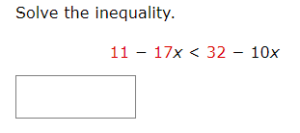A WebAssign course pack is a set of ready-to-go assignments created specifically for your textbook. Most courses offer a standard course pack that makes the course-building process fast and easy, with prebuilt assignments that cover key learning objectives in each chapter. You can easily customize them to match the topics and rigor of your course.
To meet students where they are and further help them master their course material, we’re excited to introduce the new Scaffolded Course Pack in Developmental Math. The course pack provides one assignment per section of the corresponding textbook.
This new course pack follows the learning design principle of intentional design and was created with a scaffolded approach. It adapts the kishotenketsu storytelling structure found in Japanese, Chinese and Korean narratives to mimic the flow of a lecture and how students learn concepts.
The Four Step Framework
We’ve adapted a four-step framework of introduce, develop, twist and conclude in the course pack. This creates a self-contained, guided learning experience. It helps students build their skills in an intentional, structured way by lessening guidance and support and subtly increasing complexity as they work through an assignment on their own.
“It presents to them a proper format for how they should frame their learning and how instructors often frame their classes – introduction, start small, expand, then conclude.”
– Katie Bowman, Mathematics Instructor at Surry Community College
Introduce
At the beginning of the assignment, students receive the assignment’s relevant Learning Objectives.
Students will then begin with the first step, where the course pack introduces concepts and learning objectives, typically as skill & drill questions. They’ll have access to Read Its and Learn Its as support. They may also have additional resources, including Watch Its or Master Its.

Develop
Next, students move on to develop their skills with more complex questions, combining learning objectives and including Expanded Problems (EPs) where available. This helps them build conceptual thinking skills.

Twist
In the third step, students work through applications. Help in WebAssign gradually starts to taper off as students become more confident with the material.
“I like the idea of building up the skills and then tackling an application problem that may have multiple steps to solve.”
-Wendiann Sethi, Director of the Center of Developmental Mathematics and Senior Faculty Associate at Seton Hall University

Conclude
By step four, the conclusion, students are confident enough to confirm that they understand a concept. The questions in this step return to skill & drill type questions with a difficulty level that the students can feel comfortable answering. Responsive Questions (RQs) also appear, helping students better apply and connect the course material to their lives.
As a student works through this structured path, they build mastery by working from abstract to more concrete uses of each assignment’s learning objectives. Based on faculty feedback, we carefully selected around 15 to 25 questions for each assignment. We intentionally included only those questions that guide a learner towards understanding an assignment’s relevant concepts.
How to Add to Your Course
Scaffolded Course Packs in Developmental Math are now available for the following titles:
- Aufmann/Lockwood, Algebra: Introductory and Intermediate: An Applied Approach, 6e
- Aufmann/Lockwood, Prealgebra & Introductory Algebra: An Applied Approach, 3e
- Aufmann/Lockwood, Prealgebra: An Applied Approach, 6e
- Tussy/Koenig, Basic Mathematics with Early Integers, 6e
- Aufmann/Lockwood, Introductory Algebra: An Applied Approach, 9ec
- Tussy/Koenig, Introductory Algebra, 5e
- Aufmann/Lockwood, Basic College Math: An Applied Approach, 10e
- Tussy/Koenig, Prealgebra, 6e
- Aufmann/Lockwood, Intermediate Algebra: An Applied Approach, 9e
- Kaufmann/Schwitters, Algebra for College Students, 10e
- Aufmann/Lockwood, Journey to Math Literacy, 1e
- Aufmann, Mathematics: Journey from Basic Mathematics through Intermediate Algebra, 1e
- Tussy/Gustafson, Elementary and Intermediate Algebra, 5e
- Larson, Elementary & Intermediate Algebra: Algebra Within Reach, 6e
- Karr/Massey/Gustafson, Beginning and Intermediate Algebra: A Guided Approach, 7e
The course packs are also available in corequisite bundles if one of the above titles is included as the prerequisite text.
The best part? They’re coming to more Developmental Math titles in Spring 2023 and beyond!
Learn how to add this new course pack to your new or existing courses in WebAssign today.

